Editorial
Zambian Carnivore Programme
The Zambian Carnivore Programme (ZCP) works across three national parks in Zambia to preserve the populations of large carnivores and their habitats through research, conservation, and education. For two weeks, Conjour writer Tessa Manning joined the Luangwa Valley team in Zambia’s Eastern Province. She writes about her role helping them to transcribe collected data.
Published
8 years agoon

By Tessa Manning
Zambian Carnivore Programme’s work is largely focussed on the five species of large carnivores found in Zambia – lions, hyenas, painted dogs, cheetahs, and leopards. In the Luangwa Valley, their project focuses on the South Luangwa National Park and the surrounding Lupande Game Management Area (GMA). ZCP estimates that there are 570 lions, and up to 300 painted dogs. Leopards are particularly hard to study, but ZCP estimate a density of eight leopards per 100km2, one of the highest densities in Africa.
Distilling their philosophy to three words, ZCP works to conserve carnivores through research, conservation, and education. The research side of their work involves studying carnivore population and spatial dynamics, as well as limiting factors, competition, and any disease transmission. The research ZCP conduct is predominantly aimed at identifying any threats these populations and ecosystems may face.
Senior ecologist Thandiwe Mweetwa and trainee ecologist Ben Mbeze explained the research side well, saying that the work they do is primarily to establish a population estimate and the health of the population. When out in the field, they must carefully count the animals, and gain information about the health of the group to get survival, reproduction and population data. All individuals are photographed and those images are then analysed and compared to the database of identified animals back at the camp. Part of the work I did involved matching pictures of painted dogs to their database of identified animals. Every individual’s coat pattern is different, like a fingerprint, yet it can sometimes be incredibly difficult to match a photo.
Different techniques are used to keep track of the study animals. The aim is that every pride, pack, or clan has at least one collared individual. Trainee ecologist Lameck Sakala explained that the collars used may be GPS or VHF radio collars. A VHF collar works a bit like a radio station and radio receiver – the collar is the transmitting station and the researchers’ receiver is the radio. The receiver beeps when it picks up the signal, and this beeping will intensify in strength the nearer the collar is.
As well as studying the populations, Thandiwe explained that they also assess any immediate threats. In the South Luangwa National Park, the primary threats to carnivore populations include poaching and encroachment. The town of Mfuwe, which lies on the outskirts of the park and the GMA, is rapidly growing due to an increase in tourism. The town is hungry for land and has begun to encroach further and further into the important buffer area bordering the park. This has driven further poaching in the form of snares. A lot of the snares are not set to capture carnivores, but rather bushmeat like impalas. Unfortunately, snares are non-discriminatory so it is inevitable that animals like lions, and particularly painted dogs, are affected.
There is not a species within the park that has not suffered in some way because of these cruel traps. Even elephants can be caught in snares, sometimes losing part of their trunks or having a nasty scar around their foot, often resulting in death. If elephant snaring is counted in poaching statistics for the Luangwa Valley, the numbers of poached elephants increases by 35%.
There is not a species within the park that has not suffered in some way because of these cruel traps. Even elephants can be caught in snares, sometimes losing part of their trunks or having a nasty scar around their foot.
ZCP works closely with Conservation South Luangwa (CSL) to manage and reduce poaching incidents in the park. If a carnivore is found with a snare wound, the two organisations will work together to immobilise the animal, remove the snare, and treat the wound. Regular patrols are conducted in the park to remove any snares, but it’s impossible to remove all of them and it’s rare a carnivore group will be entirely unaffected by snaring.
An emerging threat ZCP would like to know more about is the new dynamic caused by increasing numbers of livestock in the area. Thandiwe, and fellow senior ecologist Henry Mwape, explained that as the amount of woodland cover in the area has decreased, the amount of tsetse flies has decreased. Therefore, the area is now more suitable for carrying livestock. ZCP fears that as livestock numbers increase, the potential for human-wildlife conflict with carnivores will increase. Thandiwe hopes to avoid a situation in which carnivores are killed in retaliation for taking livestock.
Educating the People
Another aspect of ZCP’s work in the Luangwa Valley is their education programmes with Chipembele Wildlife Education Trust (CWET). CWET works with seventeen local schools to educate children about the importance of conservation and the place of the local National Park in their lives and the ecosystem. Together, ZCP and CWET run year-long environmental skills and education programmes on Friday afternoons with up to 25 students from Mfuwe Day Secondary School.
I was lucky to be present for the first meeting of the year. Ben Mbeze and Mercy Njobvu are trainee ecologists and together they presented the students with an introduction to what ZCP studies and their work in the field. Thandiwe and Henry followed with an introduction to this year’s study.
The energy Thandiwe and Henry brought was incredible and it’s clear they are very knowledgeable and passionate about what they do. The students were soon learning how to use a camera trap, figuring out what equipment they will need in the field, and how the project will work. This year the programme will involve comparing herbivore density in two different habitats in the National Park. The group will use camera traps and observations to find out whether open or closed vegetation areas have greater herbivore density.
The education programmes with CWET do not only provide students with fieldwork skills. The students also learn how to analyse their data, work on computers, and improve presentation skills. The programme is primarily targeted at those students who wish to pursue a career in wildlife or conservation, but the skills gained can broadly translate to a number of areas and there is no doubt that it is beneficial to the community.
Thandiwe, Henry, Ben, and Mercy are all products of the CWET and ZCP collaborations, and all are making significant differences to their community and the wildlife around them.
Moving Forward
ZCP have a number of goals for the future. Thandiwe and Henry explained that they would like to expand their community outreach programmes to include more schools and more community groups. This is especially important to help mitigate human-wildlife conflict before it becomes an issue. Henry outlined the importance of community involvement: “Conservation without the involvement of the community is nothing”.
There must always be a community aspect if the project is to be a success, and that is why the community and schools education programmes are so important to ZCP’s philosophy.
Thandiwe stated that Zambia is “a huge country with a lot of potential for conservation”. ZCP wish to act on this by expanding their programmes to other national parks in Zambia in collaboration with the Department of National Parks and Wildlife. Thandiwe talked about the Kasanka National Park that is recovering from being depleted. To study a recovering park is important to gain information on the changes that predator-prey interactions undergo when populations are rapidly changing.
ZCP currently works in Liuwa Plain National Park, Zambia’s largest park Kafue National Park, and the South Luangwa National Parks, and the ecosystems surrounding each of these protected areas. It is hoped that expansion will allow them to protect more carnivores and ecosystems into the future.
One of the most important things ZCP wishes to achieve in the next few years is to stay on top of the emerging threats to carnivores in their study areas. In the South Luangwa, it’s the increase in livestock populations. In other parks it’s the increasing human population, different methods of poaching, issues with hunting, or domestic animals transmitting diseases. If ZCP can manage to study these threats comprehensively, they will be able to make informed management recommendations for Zambia’s Department of National Parks and Wildlife. Hopefully this will help to keep some of the unique carnivore systems there intact.
ZCP’s Luangwa team have faced a few setbacks in the last year, but there is still plenty of optimism and energy to go around. The group is happy and chatty as they start work for the new year and are more keen than ever to get out and do some fieldwork. Thandiwe is looking forward to recommencing her study and work, saying: “If there wasn’t any optimism we’d all quit and be bankers or miners”.
For more information on Zambian Carnivore Programme’s projects and people, and to support their work, visit their website here.
Captions for Images, from top-down. All photos by Tessa Manning 2017, All Rights Reserved:
– Feature Image: Cheetah and Cub in Zambia
– Zambian Carnivore Programme: (Left to Right) Mercy Njobvu, Henry Mwape, Reuben Mgambo, Thandiwe Mweetwa, Lameck Sakala, Ben Mbeze
– Painted Dog: Zambia Carnivore Programme – Matching Identity.
You may like
-
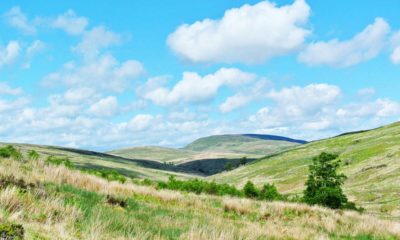

Crowdfunding the biggest nature reserve in southern Scotland
-
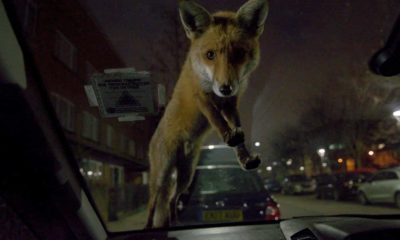

Mammal Photographer of the Year Winners 2020 Announced
-
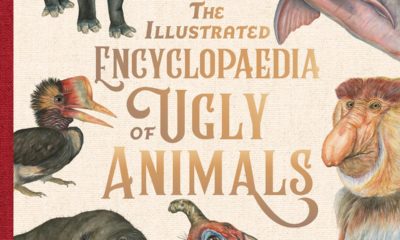

The Illustrated Encyclopaedia of Ugly Animals – Conjour Book Review
-
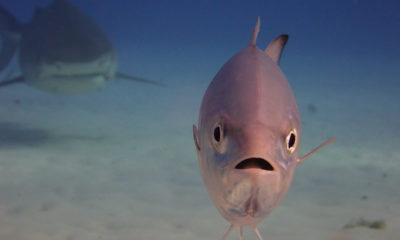

Comedy Wildlife Photography Awards 2019 – Finalists Announced
-
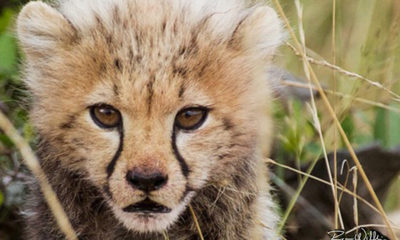

Race for Survival: The Cheetah
-


Amazon tribes take painful stings to renew their fight for the forest

Blakiston’s Fish Owl

Kakapo

A vote to focus attention on Australia’s amazing animals, and their alarming decline

Mexican Grey Wolf

Penguin run undergoes UK sport commentary

Penguin run undergoes UK sport commentary

Seven Worlds, One Planet – Extended BBC Trailer

Thunberg: We will never forgive you

Bilbies Released Back into the Wild in 2018



You must be logged in to post a comment Login